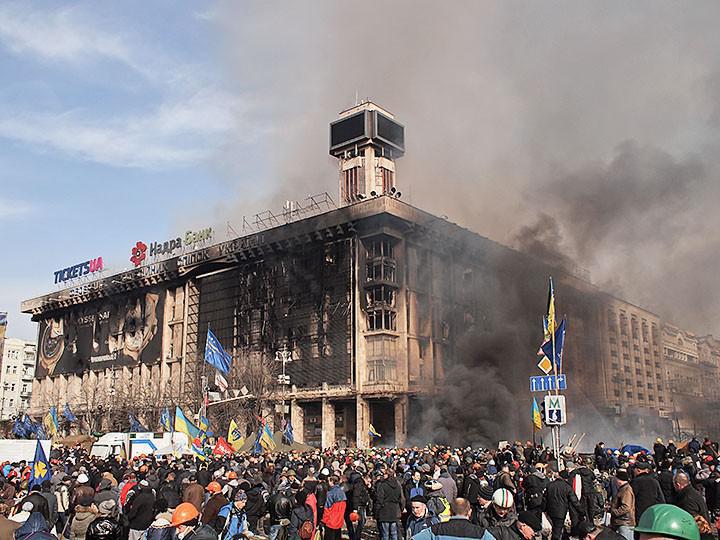It is still too early to write the full history of the conceptual war in the Ukraine of today: it is still in full swing and clearly far from its conclusion. But current conclusions may and must be drawn from it.
In the previous article we have talked about the entrenchment of the practice of “double standards” in the international relations. This practice is based on postmodern interpretations of the international law. In the previous article we have stopped on the largest international collision of the late 20th century during which this conceptual weaponry was used on a massive scale — the war of NATO against Serbia in 1999, which ended with the separation of Kosovo.
When Russia recovered some consciousness after the era of Yeltsin’s humiliation, it tried to react to the blatant “shift” in the direction of “interpretation lawlessness” of the fundamental norms of the international law. In 2004, after the “rose revolution” in Georgia, a statement of CIS countries was adopted in Moscow. In it, the Organization for Security and Co-operation in Europe (OSCE) was accused of “practicing double standards” and “unwillingness to consider the reality and the particularities of individual states.” Russia urged OSCE to “return to the original principles of the Helsinki Declaration” and temporarily blocked the adoption of the following year OSCE budget.
However, this attempt of Russia was not successful. OSCE — in an alliance with NATO — more and more harshly demands Russia to implement the Treaty on Conventional Armed Forces in Europe (and, in particular, the withdrawal of the remaining Russian forces from Transnistria), even though the military capabilities of NATO countries near the Russian borders are being constantly built up. OSCE monitors never “notice” the most blatant violations by “their son of a bitch” on all elections in post-Soviet countries (for example, the violations made by Saakashvili’s team in Georgia or Yushenko’s team in Ukraine), but they always discover the “beam in the eye of the government” on the elections in countries not yet overtaken by “banana revolutions”.
We have seen this warfare-conceptual politics of “correct interpretations” during the Ukrainian presidential elections of 2004 during the “orange revolution”, when the result of the second round of elections were declared to be rigged and — despite the constitutional norms — a third round was scheduled in order for Yushenko to win the elections.
We have seen this politics of “interpretations” of real and imagined events — in most explicit forms — during all recent “banana/orange” revolutions in the Arab countries of North Africa and Near East.
We have seen this during the parliamentary and presidential elections in Russia in 2011-2012.
And we see this same politics of blatant “interpretations” and double standards once again in the current Ukrainian “banana revolution”. More than that, this one is being accompanied by such postmodern cynicism of interpretation, in which everything black is declared to be white and vice versa — this is the first time we see something like this in the post-Soviet countries. We didn’t see such nerve even in the attempts to accuse Russia of aggression against Georgia in 2008 (the Council of the European Union established the Independent International Fact-Finding Mission on the Conflict in Georgia. In the report published on September 30, 2009, the Mission confirms that Georgia started the war by attacking South Ossetian city of Tskhinvali on the night of 7 to 8 August 2008 by heavy artillery fire, followed by an invasion which lead to deaths of civilians and Russian peacekeepers. The report concludes that, despite Georgia’s claims, Russian troops did not enter Georgia prior to that. In other words, Russia did not attack Georgia, it defended South Ossetia against Georgian aggression after Georgia started murdering Russian peacekeepers – Editor).
For the first time ever our American and European enemies don’t care about the credibility of their interpretations.
For the first time ever the leading world TV channels show the pictures of militants on “maidan” — masked, without any uniform, with improvised shields firing revolvers at the police (a kind of weapons that the governmental forces don’t have in arsenal) — and caption these pictures ” ‘Berkut’ riot police shoots unarmed activists”.
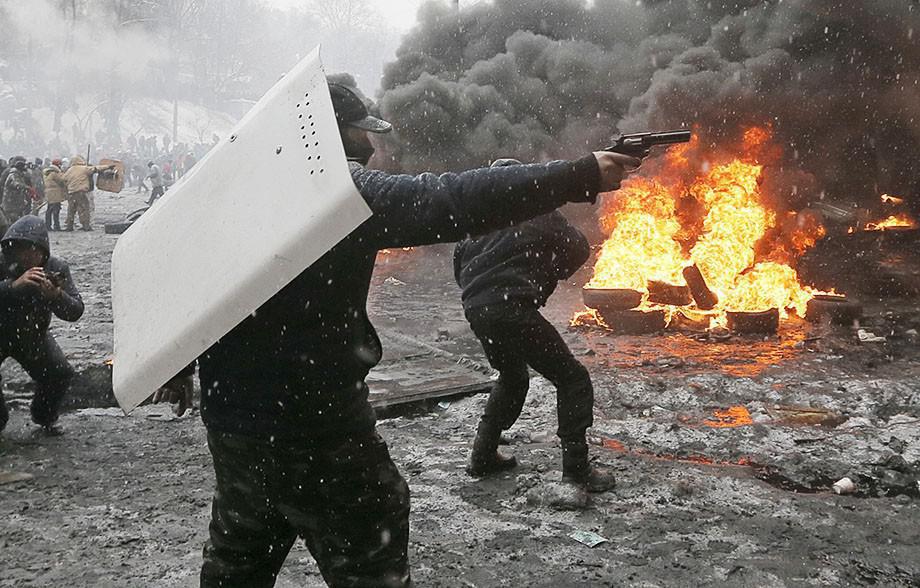
For the first time ever the segments with Nazi slogans, urging to murder “Moskals and Jews”, were being cut out from the videos from marches of armed maidan groups when aired those same TV channels.
For the first time ever the “tolerant West”, having accused the authorities of sending snipers to murder “peaceful protesters”, didn’t demand an immediate investigation and allowed the opposition leaders it supported to quickly bury the victims without a forensic medical examination.
For the first time ever Obama not only officially called the armed mayhem of several thousand “maidan” madmen in the center of Kiev “the will of the outraged people” (as if having forgotten about the rest 45 million Ukrainian citizens), but he demanded the authorities to abide by this will.
For the first time ever the U.S. and European officials called the mass-production of illegitimate “laws” by the Ukrainian Parliament, which was being held at gunpoint by assault-rifle armed Nazi militants, who have captured the governmental block of the capital, “the free will of the victorious people“. In the meanwhile, Western journalists calmly observed, but never aired the pictures of beatings of MPs who “cast the wrong vote” — right at the Parliament entrance.

The crying and horrible postmodern novelty of these and many other cases of “for the first time” which occur right in the middle of Europe must be comprehended. And, unfortunately, consider how this will be used against us in the future. It is no coincidence that all main topics we discuss in the “Conceptual war” section of the newspaper surface in the course of events in Ukraine.
I already wrote before that after the dissolution of USSR and after Ukraine became independent, the area of meaning-making in the country was almost fully handed over to the Western Ukrainian elite. This elite received the control over the school and higher education, culture, science, most of the mass media, book publishing. And started to implement the corresponding “historical myth of Ukrainianism” in the mass consciousness of all of Ukraine.
The roots of this myth are in the Russophobic mythology of the Polish authors of the XVIII — XIX – Jan Potocki, Tadeusz Czacki, Franciszek Duchinski and others. Their ideas were inherited by Nikolay Kostomarov, Mikhail Grushevsky and others. That is exactly where the stories about the legendary ancient “Ukr” tribes originate, as well as the stories about the magnificent and exceptionally effective “Cossack democracy”, which supposedly pre-dated the establishment of democratic institutions in Europe, the stories about the special Ukrainian language (in reality it was being created by Panteleimon Kulish in XIX century and “formed” to its final form by specialists belonging to the Austrian General Staff), the stories about the “Aryan birthright” of Ukrainians in Europe and the stories about the fundamental ethnic, civilizational and anthropological supremacy of Ukrainians over “Moskals” (Russians). And that is where the stories about those same “damned Moskals”, who oppressed and ruined the great Ukrainian civilization originate.

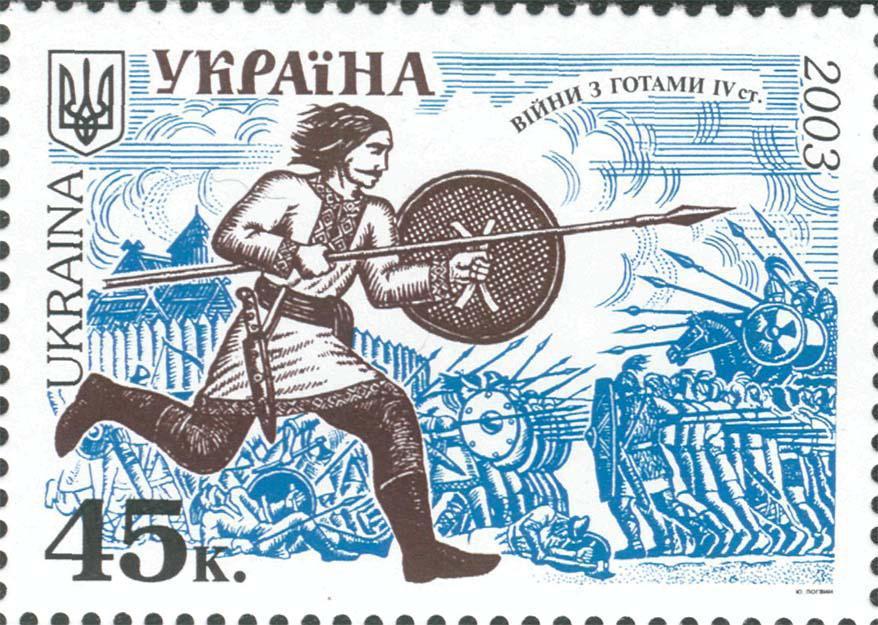
All these fairy-tales were conceptualized in 1920s by Bandera Nazi precursors of modern Western Ukrainian supremacists. These fairy-tales were “taken off the shelf” after the dissolution of USSR, modernized and reconstructed anew with the active support of Bandera Nazi emigrants (first and foremost, American and Canadian). The key conceptual components of this myth were constructed exactly according to the recommendations of the “elite theorist” Georges Sorel, which we have discussed earlier.
- historic accomplishments and the greatness of the nation;
- mythologized desired future in which the nation achieves its goal by restoring this greatness;
- the list of “evil powers” which prevent the nation from achieving the goal;
- the necessity of “creative violence” (genocide – Editor) as the means of achieving the goal.
Western Ukrainian supremacists explicitly used the means used by Mussolini’s fascists and Hitler’s Nazis when they were forming and implementing this in the minds of the masses.
It happened this way because the ideologists of Western Ukrainian supremacists copied the structure of their myth from Mussolini, Gentile, D’Annunzio, Moeller van den Bruck. It was done, for example, in 1920s by one of the leading conceptual precursors of Bandera Nazis, Dmitro Dontsov, in his main “theoretical” work “Integral Nationalism”.
It also happened this way because the Western Ukrainian supremacist “practitioners”, who had currently become “heroes of Ukraine” — Bandera, Shukhevich, and a number of others — first studied in the security services of Mussolini’s Italy, and later in Hitler’s intelligence agencies.
Bandera Nazi mythological “conceptual baggage” was being poured onto all of Ukrainian population from the beginning of 1990s, first and foremost — onto the young generation. Fiction, scientific, popular literature, textbooks were soaked in this mythology, school and university students had to pass exams on this mythology, this mythology was being implemented by Ukrainian print and online press, this mythology was propagated by the “new Ukrainian” theatre and cinema.
Even in East Ukraine one had to “hunt” for an alternative point of view, against the backdrop of total mythologized propaganda. One could resist the constructed official Ukrainian mythological history only thanks to family education (first and foremost, in Russian and Russian-speaking families, where it was possible), and thanks to the influence of Russian media and Russian TV channels. Which, to be honest, didn’t do any serious work on exposing the “Ukrainianizing” mythology.
Almost one and a half young generations in Ukraine were raised like this, one and a half generations quite deeply immersed in a militant myth, hostile to Russia and Russians. By examining the problem in conceptual terminology of Joseph Nye’s managing of “soft power”, we must admit that a significant part of the Ukrainian (especially young) population was taught “to want what Bandera Nazis want”.
This is why it was not that difficult to infect quite wide Ukrainian masses with the spirit of the “war against the treacherous Moskal-like authorities” when the “maidan” confrontation was being provoked. This was being done, again, based on the research of crowd psychology conducted over a century ago by another conceptual theorist of elites Gustave Le Bon, as well as with consideration of the practical experience of Mussolini and Hitler.
The non-thinking collectivism of the crowd, infected with the single spirit of resistance against the authorities and with being prepared to proceed to “creative violence”, was being created by nontrivial psychologists, directing the script of the “maidan” stage show and airing this “maidan spectacle” on TV. Almost all Ukrainian media (note that most of the personnel of these media took “qualification upgrade courses” in the USA, Great Britain and other Western countries), were actively and in a coordinated manner working on stirring this crowd up, together with almost all of the Western online and print press.
I want to emphasize that, judging by the testimonies of the witnesses, the crowd was quite directly guided. That part of the crowd which was psychologically not ready to engage in armed confrontations, was being directed according to Gene Sharp’s “nonviolent resistance” methods: “Stand your ground, hold on, there must be a lot of us, they won’t dare to attack peaceful unarmed people!“
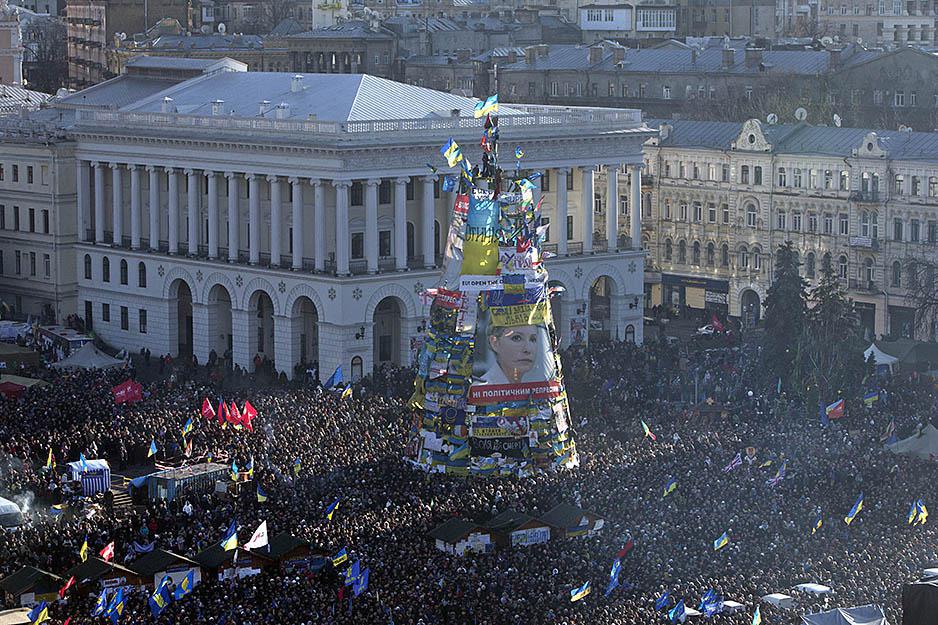
The other part of the crowd, ready for an armed confrontation with the National Guard and “Berkut” was being directed — again, quite professionally — according to Hakim Bey’s “Temporary Autonomous Zones” city guerrilla militant action theory.
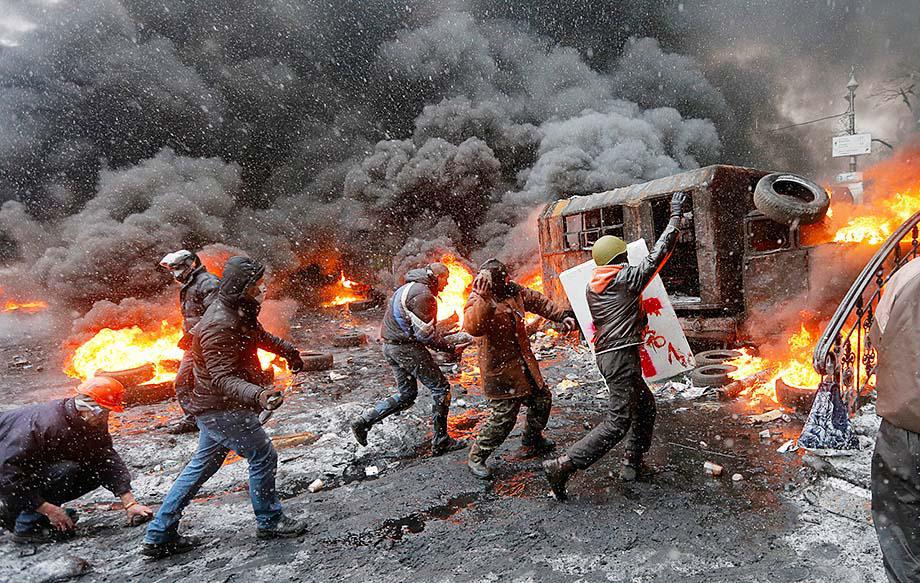
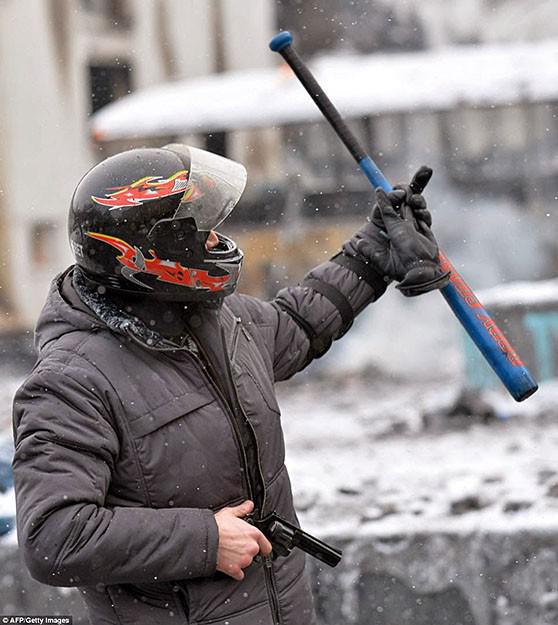
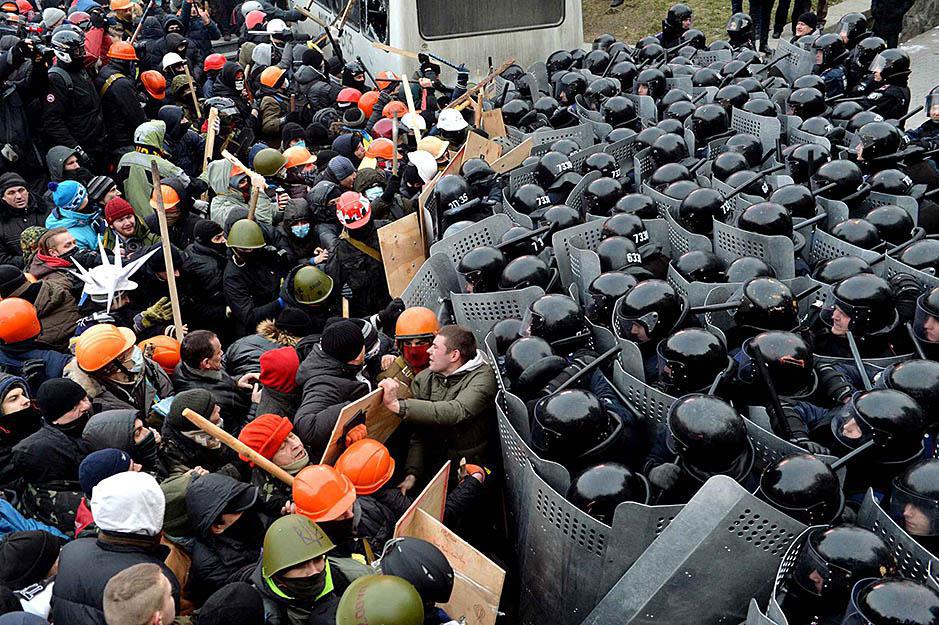
As a result, what seemed to be “maidan” chaos was quite consciously and purposefully controllable — just like in Steven Mann’s model. Multiple “strange” provocations surrounding the “maidan”, which consequently heated up the crowd, turn up to be the most clear evidence of the control over this chaos.
A lot can be said about the manifestations of conceptual warfare during the current “banana revolution”.
These include the postmodern simulacrum of reality in the form of “maidan” rumors about the atrocities committed by “Berkut” riot police or the start of “Russian genocide of Ukrainians” in Crimea, which later transit to the Ukrainian and world media.
These include the methods of postmodern “decentralization” with the help of which the collective consciousness is being drawn away from the main events, such as the mass use of powerful firearms by “maidan” militants, into the area of diverting “sensational” rumors. Such as the supposedly mass kidnapping of “Automaidan” activists, or the supposed arrival of Russian special forces to aid “Berkut” riot police, or the supposed sniper fire opened at the “maidan” stage (with a scratch on Mr. Turchinov’s cheek being shown as proof).
This is, finally, that same postmodern orgy of “double standards” we have discussed above. The law and the constitution get replaced with interpretations of “justice” in favor of “maidan” crowds and their political “caretakers”, after which they demands Russia to take strictly legal steps without considering some “justice” — again, in favor of the “maidan”.
It is still too early to write the full history of the conceptual war in the Ukraine of today: it is still in full swing and clearly far from its conclusion. But current conclusions may and must be drawn from it.
The march and the rally of “white ribbon-bearers” (white ribbon was the symbol of the failed Russian “maidan” in 2011-2012 – Editor) on Sakharova street parallel to the anti-white ribbon march and rally of the “Essence of Time” movement, the never ceasing howling of white ribboners in the media and the more and more threatening rhetoric of the West — all of this shows that the attempts to organize “maidans” in Moscow and/or in large regional cities of Russia are possible very soon. Since as of yet there are no active masses infected with anti-authority mythology in Russia (and Moscow in particular), which exist in Ukraine, the methods of the possible “Moscow maidan” must be both more sophisticated and much more cynical and fierce. This refers to all faces of war waged against Russia, which we discuss in “Essence of Time” newspaper — from metaphysics to ideology and from culture to separatism.
We must prepare for this: seek and think through adequate and powerful antidotes to possible “maidan” and “near-maidan” actions of our enemies. And be metaphysically, conceptually, physically, technologically, psychologically, and so on, able to use these antidotes.
Source (for copy): https://eu.eot.su/?p=5105
This is the translation of the second article (first published in “Essence of Time” newspaper issue 70 on March 26, 2014) by Yury Byaly on how double standards and various conceptual means of interpretation allow the United States to establish in foreign countries the governments it needs.

